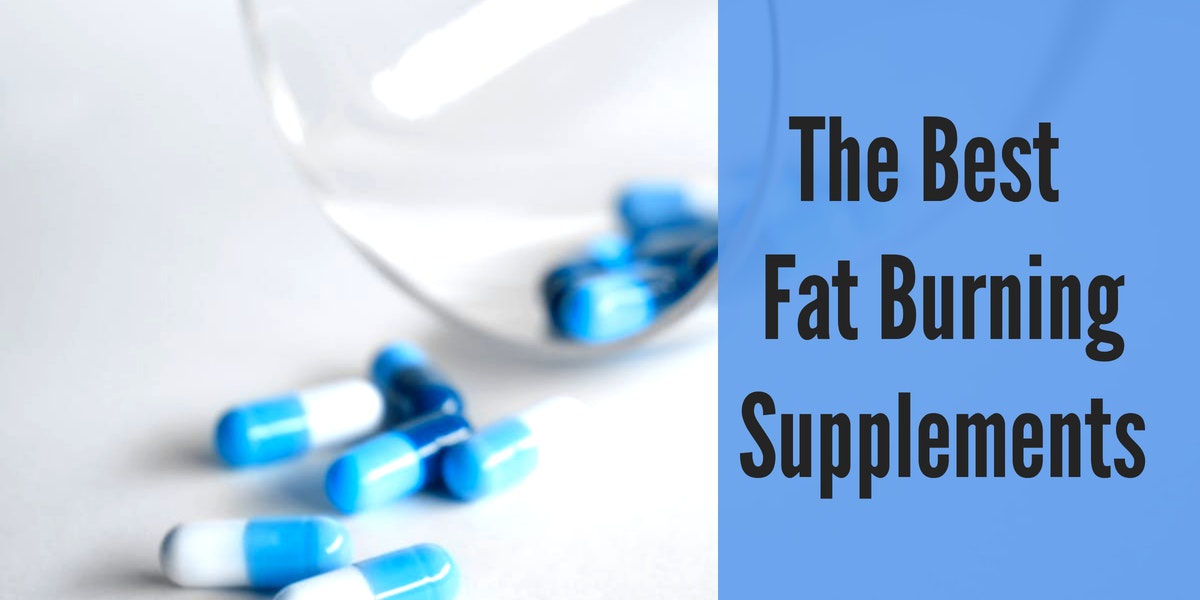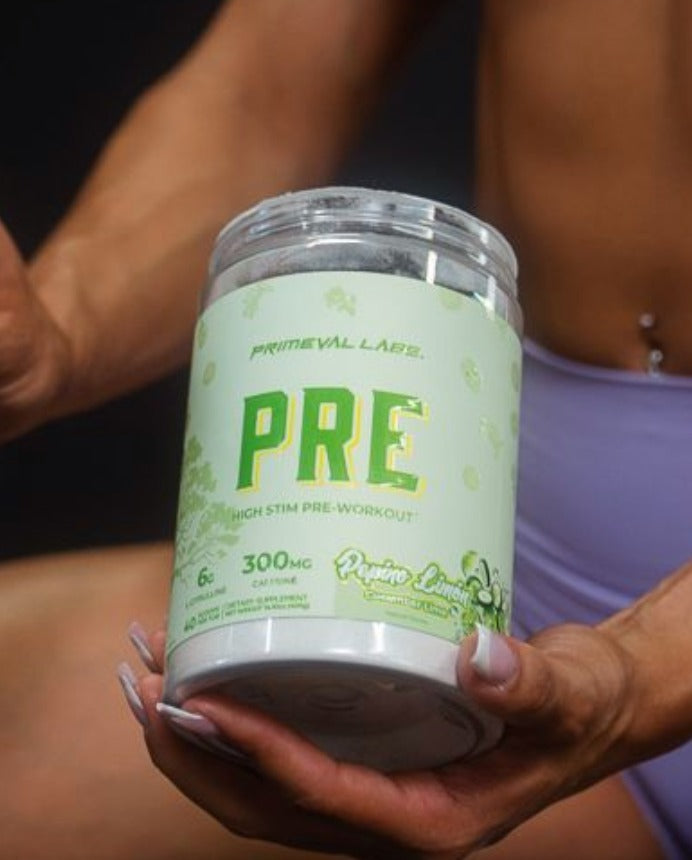If you want to know what makes belly fat so stubborn and hard to lose as well as what you need to do to lose belly fat once and for all, then you want to read this article.
Stubborn fat.
The bane of everyone’s existence.
You know exactly the kind of body fat we’re talking about too. The kind of fat that, no matter how much you diet nor how much cardio you perform, never, ever seems to get lost.
Suggested Products

Pyretic Black
Have a weight loss goal? Pyretic Black is formulated to help you reach your goals.

ENERGIZED AMINO
EAA Max Energy is a delicious tasting BCAA/EAA plus Caffeine. Now available in 4 flavors that all taste amazing!
Why is that?
What is it about stubborn belly fat that makes it so, well, “stubborn” and hard-headed?
We’re going to tell you exactly what makes certain body fat more stubborn than other regions as well as how you can eliminate stubborn belly fat once and for all.
And best of all, it won’t require any gimmicks, fad diets, or extreme exercise protocols.
So, let’s start with discussing what makes stubborn belly fat different from other fat stores in the body.
What Makes Stubborn Belly Fat so Stubborn?
Have you ever noticed that certain areas of your body tend to lose fat relatively easy while other areas seemingly stay there no matter what?
That’s “stubborn” fat, and it definitely exists.
Chances are when you diet, you notice that fat from your arms and legs tends to go rather quickly, yet the mass of fat around your midline tends to “hang around” a while longer.
Why is that?
Well, just realize that it’s not because you ate carbohydrates after 6PM (are ate carbs at all for that matter. It’s not because you didn’t perform the right exercises that specifically “target” belly fat. And it’s not because your hormones are out of whack.
To understand what makes belly fat harder to lose than fat in other areas of your body, let’s first review how your body burns fat:
Fat Burning 101
Burning body fat is a two-step process consisting of:
-
Lipolysis
-
Beta-oxidation
Lipolysis involves the release of stored fatty acids from adipose tissue (i.e. fat cells).[1]
Beta-oxidation is that actual “burning” of those now-freed fatty acids for energy.[2]
The next question you’re already pondering is, how do I induce or initiate lipolysis, or more specifically, what causes fat cells to release their stored fatty acids?
Hormones.
More specifically, two catecholamines in adrenaline (epinephrine) and noradrenaline (norepinephrine) are responsible for inducing lipolysis.[3]
When these hormones enter circulation, they dock or “attach” to the receptors on your fat cells. And, once these chemicals dock, they “unlock” the fat cells, causing a release of stored fatty acids into the bloodstream.
L-Carnitine then picks up the fatty acids and shuttles them into the mitochondria of the cell, where they are then oxidized (“burned”) as fuel. This process of beta-oxidation occurs in various types of cells in the body, including those in your muscles.
In fact, well-developed muscles are particularly efficient at burning fat for fuel[4], which is one of the reasons it’s easier to lose body fat when you have a fair amount of muscle.
Now, back to what makes certain areas of fat more stubborn than others.
The big difference between “easy” fat and “stubborn” fat is in the amount of catecholamine receptors each contains that stunt lipolysis.
If you remember, we mentioned that catecholamines have to dock to receptors on the fat cells in order to unlock them and free the stored fatty acids. As it turns out, fat cells don’t just have one kind of receptor relating to fatty acids. They have two.[5]
Alpha Adrenergic Receptors (or “alpha receptors” for short), and
Beta Adrenergic Receptors (or simply “beta receptors).
Now, the exact mechanisms of how these two receptors work gets a bit complicated, but essentially you can think of it this way:
-
Alpha receptors hinder lipolysis (and subsequently fat burning)
-
Beta receptors promote lipolysis (and thereby help burn body body)
And here, we arrive at the big difference between “regular” and “stubborn” body fat:
Fat that is easier to lose (the kind on your face, chest, and arms) has more beta-receptors than alpha-receptors, and fat that is more “stubborn” and harder to lose (i.e. hips, stomach, thighs) has more alpha-receptors than beta-receptors.
That’s it.
You see, when you understand the simple physiology behind fat loss, you quickly realize that all of the gimmicks, fad diets, cleanses, and “fat loss hacks” being touted across the internet are complete hogwash.
The ratio of alpha-receptors and beta-receptors in individual fat cells determines how easy or difficult it is to mobilize stored fatty acids and thus burn body fat.
Therefore, when you’re losing fat, you will notice reductions in fat masses in those areas with high amounts of beta-receptors whereas the areas with more alpha-receptors will be slower to respond to your fat loss protocols.
Now, before we get to how to lose belly fat, let’s discuss some of the biggest myths surrounding belly fat loss.
5 Biggest Belly Fat Loss Myths
If you struggle to lose belly fat, we’re here to say, don’t worry:
-
You don’t need to ditch carbohydrates
-
You don’t need to avoid gluten
-
You don’t have to starve yourself
-
You don’t need to eat at specific times of the day
-
You don’t need to perform endless amounts of ab exercises
-
You don’t need to avoid GMOs or non-organic foods
The reason we say this is because there is a lot of nonsense and bad information given when it comes to losing belly fat. Don’t believe us?
Just do a quick Google search for “how to lose belly” fat and you’ll be greeted by a laundry list of “quick fixes” and “fat loss hacks” that generally involve one or more of the following:
-
Performings lots of abdominal exercises (i.e. crunches, sit ups, planks, etc.)
-
Eliminating refined carbohydrates (sugar)
-
Eliminating carbohydrates completely from the diet
-
Extreme calorie reduction
-
Eating only during a small window of time each day
-
Perform hours of fasted cardio
The simple truth is that belly fat is not caused by some horrible gluten-derived, genetically-modified toxin disrupting your hormones. You gain belly fat by consuming too many calories above you TDEE for too long.
And, while belly fat may be more stubborn than fat in other areas of the body, it’s not immune to the same protocols you would use to lose fat anywhere else.
In other words, if you get your body fat percentage low enough, you will lose belly fat. It just may be a bit slower than other areas of your body.
That being said, here are the top 5 myths about belly fat you can completely ignore:
-
Spot reduce or target belly fat.
You canNOT spot reduce or “target” belly fat specifically -- the body doesn’t work that way. By this, we mean that no matter how many crunches, sit ups, or dumbbell side bends you do, you’re not going to directly burn off your love handles and belly fat.[7] -
Eliminate “x” food from your diet
Nope, another false statement concerning belly fat. No individual food will help or hurt your fat loss journey. In other words, your consumption of some refined, high-glycemic carbs, processed foods, or dairy is not the reason you struggle to lose belly fat. Along those lines, no amount of healthy fats, magical MCT oil, or BHB salt is going to greatly accelerate your rate of fat loss. -
Don’t eat after 6PM
This is perhaps the oldest myth surrounding fat loss. By simply eating one bite of food past 6PM (even if it’s the healthiest gluten-free, keto-approved food there is) it automatically goes to fat storage.
We’re here to tell you that is a bunch of crap.
Research has shown that what time of day you eat your calories has no effect on weight loss or body composition.[8] -
Eat 4-6 small meals throughout the day to boost metabolism
Nope, wrong again. Consuming a bunch of mini-meals throughout the day does not boost your metabolism and give you a faster metabolic rate than if you were to eat fewer, larger meals.[9,10] Along those lines, consuming fewer meals throughout the day does not send your body into starvation mode, either. -
Stress and cortisol aren’t the problem
While it’s true that being stressed can encourage behaviors that lead to fat gain, stress in and of itself does not directly cause you to gain weight.
With those myths successfully debunked, let’s now discuss the big “secret” to losing belly fat.
The Truth About Losing Stubborn Belly Fat
Losing belly fat essentially boils down to two things:
-
Reduce overall body fat percentage
-
Manipulate diet, training, and supplementation to mobilize belly fat better and accelerate fat loss.
Harkening back to one of the top myths surrounding belly fat (spot reduction), in order to lose belly fat, you must get your overall body fat percentage low enough. The body will access its “easier” fat stores first, but eventually, when body fat reserves get low enough they will have to turn to the “stubborn” fat stores to satisfy its energy requirements.
Therefore, anything you do that accelerates fat loss in general will also increase the loss the stubborn belly fat.
Generally speaking, men need to get their body fat percentage to about 10% (and women 20%) for the majority of their belly fat to be eliminated.
That being said, however, there are a few other things you can do specifically regarding diet, exercise, and supplementation to help your body access the stubborn fat stores more efficiently.
How to Lose Belly Fat
When it comes to losing belly fat, some people just need to train a few times per week and utilize a modest calorie deficit. Others aren’t as genetically gifted. Simple diet and exercise may not be enough to get results at the rate they want.
If that’s you, here are a few diet, training, and supplementation strategies you can use to accelerate fat loss:
Employ a Moderately Aggressive Calorie Deficit
Fat loss 101 mandates that in order lose weight you must be in a calorie deficit. By that, we mean that you have to consume fewer calories than you burn each day. Do this day after day, and you will lose weight.
But a question many people have when dieting is how big should that calorie deficit be?
Basically, we want to create a large enough deficit to allow our bodies to burn fat as fast as possible while preserving lean muscle tissue.
A small deficit (5-10% below TDEE) will work, but the results will be much slower than if you used a slightly more aggressive deficit (around 20% below TDEE).
Now, do not take this aggressive calorie deficit to mean we’re advocating those extreme starvation-based fat loss diets. Using one of those extreme diets (the kind that has you eating less than 1000 calories per day) sets you up for extreme hunger, stress, and muscle loss.
To help determine how large our calorie deficit should be for losing weight as quickly as possible while sparing muscle mass, let’s consult a Finnish study that used elite track and field athletes who had an average body fat percentage of roughly 10%.[18]
All athletes followed their regular training schedule along with a high-protein diet. One group of athletes used a 12% calorie deficit, while the other group used a 24% calorie deficit. After 4 weeks of dieting, both groups lost weight, but the athletes using a 12% deficit lost very little fat.
The group utilizing a 24% calorie deficit lost 4 pounds of fat (1lb of fat per week) on average and virtually no muscle.[18]
What this study tells us, is that if we consume enough protein, lift weights, and limit cardio, we can use a fairly aggressive calorie deficit (20-25% below TDEE) to maximize fat loss and minimize muscle loss.
Lift (Heavy) Weights
For far too long, people trying to lose weight starved themselves and spent hours slogging it out on the treadmill.
While this frequently results in weight loss, it’s not really “good” weight loss.
You see, when you adopt any extreme diet that severely restricts calories, while simultaneously performing countless sessions of boring, steady-state cardio, you have the perfect recipe of muscle loss.
We’ve already discussed the importance of consuming enough protein each day above as well as how big of a calorie deficit you should use.
But diet is only one part of the weight loss equation.
You also need to lift weight, and fairly heavy weights at that.
But, isn’t weight lifting for building muscle?
Indeed it is, but research also indicates it’s particularly effective for accelerating fat loss while preserving lean muscle.[32]
How “heavy” should the weights be?
Generally speaking, you should be lifting weights that are between 70-85% of your one-rep max.
“But my trainer told me lighter weights and higher reps better for losing weight?”
Unfortunately, your trainer is wrong, and here’s the research to prove it.
A study compared the effects of training with lighter weights vs heavier weights on the metabolic rates of men. Researchers documented that men training with “heavy” weights (80-85% of their 1RM) increased their metabolic rates significantly more than the group of men that trained with lighter weights (45-65% of their 1RM).[33]
Results similar to these have been found in other studies as well.[34]
As far as what type of weight lifting should you do, you want the majority of your training to involve heavy, compound exercises, such as the bench press, squat, and deadlift. These exercises recruit the largest amount of muscle and give you the biggest bang for your energy buck in terms of calories burned during a workout.
In fact, studies confirm what many of you already know -- compound exercises burn more calories during and after training than isolation exercises or ones that involve smaller muscle groups (Think squats vs lateral raises).[35]
If you need help coming up with a training program to use in conjunction with your fat loss diet, click here.
Train Fasted
Many people assume that training fasted means training with no food in their stomach. In other words, they “feel” like they have an empty stomach. However, that’s not quite what being fasted means.
You see, after you eat a meal, your body is in a post-prandial state for anywhere from 3-6 hours following your meal.[11] During this time, insulin levels are elevated as your body is trying to partition and drive the nutrients you just ate into your muscles.
Why is this important?
Well, when insulin levels are elevated, lipolysis is stunted, which means fat burning is at an all-time low.[12,13]
Your body enters a fasted state when its finished absorbing all of the nutrients from your meal and insulin levels return to their baseline levels. This is why the sensation of having an “empty” stomach doesn’t technically qualify as being fasted -- your insulin levels may not have returned to their low, baseline levels yet.
Now, when you do exercise in a fasted state, fat burning is accelerated.[14] Research has noted that resistance-training (i.e. weight lifting) is particularly effective.[15]
Additional studies indicate that performing fasted workouts also increases blood flow to the abdominal region, which further helps burn belly fat.[16] This is due to the fact that the more blood flow that a particular region of the body gets, the more catecholamines are able to reach it. And, since catecholamines are the “keys” to unlocking the fat cells, this is a very good thing for us.
Due to the length of time it can take to digest and fully absorb a meal (and the uncertainty of guessing when your insulin levels return to baseline), many people choose to perform their fasted training in the morning, immediately after waking and before eating breakfast.
This further accelerates weight loss due to the fact that when you fast for longer than 6 hours your body’s ability to burn fat increases dramatically.[17]
Now, one drawback to fasted training is reduced training intensity. Simply put, when training without any food in your system, many people struggle to focus and give it their all when hitting the weights.
Additionally, fasted training also increases the likelihood of muscle breakdown.[19] Training too hard for too long will cause damage to muscle fibers, and if this happens to a great enough extent, your body has difficulty keeping up with repairs, causing you to lose muscle.
Seeing as we want to retain as much muscle as possible while dieting, fasted training may not be the first method you use when trying to lose belly fat.
High-Intensity Interval Training
Resistance-training and lifting heavy weights should make up the vast majority of your exercise program regardless if your goal is to build muscle or burn fat. Cardio does have a time and place though, especially when you’re trying to lose body fat as quickly as possible.
Research confirms as much, as numerous studies note that If you want to lose fat fast (while sparing muscle), you want to lift weights and perform cardio.[36,37,38,39]
What kind of cardio should you perform?
High Intensity Interval Training, or HIIT for short.
High-intensity interval training is pretty well known in fitness circles these days. HIIT essentially involves alternating between periods of all-out effort and low-intensity “active” recovery.
HIIT can be performed using any of your favorite cardio machines -- rowers, ellipticals, treadmills, etc. It can also be done with kettlebell swings, bodyweight circuits, or sprints outdoors.
What about high-intensity interval training makes it so effective for losing stubborn belly fat?
Well, countless studies have shown that bried HIIT cardio sessions lead to greater fat loss over time than longer, steady-state cardio sessions.[20,21,22,23]
In fact, one study out of Canada noted that performing just 4-6 30-second sprints burns more body fat over time than 60 minutes of walking on the treadmill (the bro’s favorite form of cardio.[24]
But that’s not all…
Shorter cardio sessions also help you retain muscle and strength better than longer cardio sessions, which is important to keeping metabolism high as well as avoiding the skinny fat look at the end of your cut.[25]
Use Yohimbine
Yohimbine is one of the best fat burning ingredients, period. The potent compound is naturally occurring in the Pausinystalia yohimbe plant and the reason we say it’s one of the top weight loss supplements is that it helps the body access those hard to reach fat stores.[26]
Essentially, yohimbine enables your body to reduce fat stores faster, by preventing your body from storing fat.
If you remember from above when we discussed the different receptors found on fat cells, we mentioned that alpha-receptors hinder lipolysis while beta-receptors accelerate it.
Well, one of yohimbine’s main actions is as an alpha-receptor antagonist. What this means, is that yohimbine essentially binds to the alpha-receptors on your fat cells “blocking” the port, which allows the fat burning catecholamines (epinephrine and norepinephrine) to bind to the beta-receptors, thereby unlocking the fat cells and allowing those “stubborn” areas to be accessed and burned.[26,27]
Due to these effects, yohimbine is frequently billed as a way to “target” stubborn fat, and in this case, that’s not entirely wrong.
It’s also worth noting that yohimbine helps burn body fat without affecting lean muscle mass, which is paramount during fat loss phases.[27]
The “catch” with yohimbine is that it works best when you are in a fasted state as elevated insulin levels negate the fat burning properties of yohimbine.[28]
Therefore, we’d recommend taking it first thing in the morning as part of your pre workout prior to performing fasted training.
Now, it’s important to remember that insulin isn’t an “on-off” switch, meaning that minor increases in insulin won’t completely negate the fat burning effects of yohimbine, but it will reduce some of its effects. By that, we mean that the higher your insulin levels are when you take yohimbine to less fat burning you’ll get.
As such, if you’re concerned your fasted training may result in too much muscle loss but still want to take advantage of its fat burning benefits and enhance those with the use of yohimbine, we’d recommend sipping on EAA Max during training.
EAA Max contains 2 grams of low-glycemic carbohydrates that won’t spike insulin levels along with all nine essential amino acids (including 5g 2:1:1 BCAA) that can help spare muscle tissue.
Caffeine
We all know that losing weight boils down to calories in vs calories out, and caffeine can tilt the balance of that scale in your favor as it increases your body’s daily energy expenditure.[29]
But that’s not the only reason to consider supplementing with caffeine. It also offers a number of other benefits that can aid your performance during training.
More specifically, caffeine improves[30,31,32]:
-
Strength
-
Power
-
Endurance
-
Anaerobic (i.e. weight lifting) performance
-
Resistance to fatigue
Now, the stimulating and fat burning effects of caffeine do start to wane the more frequently you consume it. As such, recommend cycling your intake of caffeine throughout the week. This helps avoid tolerance and allows you to continue to experience the same boost in mood, energy, focus, and fat burning without having to continually up the dose.
The Bottom Line on Losing Stubborn Belly Fat
Millions of people struggle to lose belly fat each and every day, often resorting to all sorts of extreme diet and exercise programs.
But, it doesn’t have to be that way, and in reality, it shouldn’t be...ever.
Follow the tips, tricks, and routines we discussed above, and you’ll have your own set of six packs abs before you know it.
References
-
Galton DJ, Bray GA. Studies on lipolysis in human adipose cells. J Clin Invest. 1967;46(4):621-9.
-
Vishwanath VA. Fatty Acid Beta-Oxidation Disorders: A Brief Review. Ann Neurosci. 2016;23(1):51-5.
-
Arner P , et al. "In Situ Studies of Catecholamine-induced Lipolysis in Human Adipose Tissue Using Microdialysis. - PubMed - NCBI." National Center for Biotechnology Information, www.ncbi.nlm.nih.gov/pubmed/2164095.
-
DE, Kelley. "Skeletal Muscle Fat Oxidation: Timing and Flexibility Are Everything. - PubMed - NCBI." National Center for Biotechnology Information, www.ncbi.nlm.nih.gov/pubmed/16007246.
-
RJ, Lefkowitz. "Direct Binding Studies of Adrenergic Receptors: Biochemical, Physiologic, and Clinical Implications. - PubMed - NCBI." National Center for Biotechnology Information, www.ncbi.nlm.nih.gov/pubmed/38720.
-
AD, Strosberg. "Structure, Function, and Regulation of Adrenergic Receptors. - PubMed - NCBI." National Center for Biotechnology Information, www.ncbi.nlm.nih.gov/pubmed/8401205.
-
Vispute SS , et al. "The Effect of Abdominal Exercise on Abdominal Fat. - PubMed - NCBI." National Center for Biotechnology Information, www.ncbi.nlm.nih.gov/pubmed/21804427.
-
Nonino-Borges CB , et al. "Influence of Meal Time on Salivary Circadian Cortisol Rhythms and Weight Loss in Obese Women. - PubMed - NCBI." National Center for Biotechnology Information, www.ncbi.nlm.nih.gov/pubmed/17483007.
-
Bellisle F , et al. "Meal Frequency and Energy Balance. - PubMed - NCBI." National Center for Biotechnology Information, www.ncbi.nlm.nih.gov/pubmed/9155494.
-
Cameron JD , et al. "Increased Meal Frequency Does Not Promote Greater Weight Loss in Subjects Who Were Prescribed an 8-week Equi-energetic Energy-restricted Diet. - PubMed - NCBI." National Center for Biotechnology Information, www.ncbi.nlm.nih.gov/pubmed/19943985.
-
Surina DM , et al. "Meal Composition Affects Postprandial Fatty Acid Oxidation. - PubMed - NCBI." National Center for Biotechnology Information, www.ncbi.nlm.nih.gov/pubmed/8322958.
-
Choi SM , et al. "Insulin Regulates Adipocyte Lipolysis Via an Akt-independent Signaling Pathway. - PubMed - NCBI." National Center for Biotechnology Information, www.ncbi.nlm.nih.gov/pubmed/20733001.
-
Newsholme EA and Dimitriadis G. "Integration of Biochemical and Physiologic Effects of Insulin on Glucose Metabolism. - PubMed - NCBI." National Center for Biotechnology Information, www.ncbi.nlm.nih.gov/pubmed/11460564.
-
Derave W , et al. "Effects of Post-absorptive and Postprandial Exercise on Glucoregulation in Metabolic Syndrome. - PubMed - NCBI." National Center for Biotechnology Information, www.ncbi.nlm.nih.gov/pubmed/17372321.
-
"Increased P70s6k Phosphorylation During Intake of a Protein'carbohydrate Drink Following Resistance Exercise in the Fasted State." SpringerLink, link.springer.com/article/10.1007%2Fs00421-009-1289-x.
-
Gjedsted J , et al. "Effects of a 3-day Fast on Regional Lipid and Glucose Metabolism in Human Skeletal Muscle and Adipose Tissue. - PubMed - NCBI." National Center for Biotechnology Information, www.ncbi.nlm.nih.gov/pubmed/17784905.
-
Achten J and Jeukendrup AE. "Optimizing Fat Oxidation Through Exercise and Diet. - PubMed - NCBI." National Center for Biotechnology Information, www.ncbi.nlm.nih.gov/pubmed/15212756.
-
Huovinen HT , et al. "Body Composition and Power Performance Improved After Weight Reduction in Male Athletes Without Hampering Hormonal Balance. - PubMed - NCBI." National Center for Biotechnology Information, www.ncbi.nlm.nih.gov/pubmed/25028999.
-
Pitkanen HT , et al. "Free Amino Acid Pool and Muscle Protein Balance After Resistance Exercise. - PubMed - NCBI." National Center for Biotechnology Information, www.ncbi.nlm.nih.gov/pubmed/12750588.
-
Treuth MS , et al. "Effects of Exercise Intensity on 24-h Energy Expenditure and Substrate Oxidation. - PubMed - NCBI." National Center for Biotechnology Information, www.ncbi.nlm.nih.gov/pubmed/8883001.
-
Tremblay A , et al. "Impact of Exercise Intensity on Body Fatness and Skeletal Muscle Metabolism. - PubMed - NCBI." National Center for Biotechnology Information, www.ncbi.nlm.nih.gov/pubmed/8028502.
-
Trapp EG , et al. "The Effects of High-intensity Intermittent Exercise Training on Fat Loss and Fasting Insulin Levels of Young Women. - PubMed - NCBI." National Center for Biotechnology Information, www.ncbi.nlm.nih.gov/pubmed/18197184.
-
King, Jeffrey Warren, "A Comparison of the Effects of Interval Training vs. Continuous Training on Weight Loss and Body Composition in Obese Pre-Menopausal Women." (2001). Electronic Theses and Dissertations. Paper 123. https://dc.etsu.edu/etd/123
-
Macpherson RE , et al. "Run Sprint Interval Training Improves Aerobic Performance but Not Maximal Cardiac Output. - PubMed - NCBI." National Center for Biotechnology Information, www.ncbi.nlm.nih.gov/pubmed/20473222.
-
JC, Gergley. "Comparison of Two Lower-body Modes of Endurance Training on Lower-body Strength Development While Concurrently Training. - PubMed - NCBI." National Center for Biotechnology Information, www.ncbi.nlm.nih.gov/pubmed/19387377.
-
Millan MJ , et al. "Agonist and Antagonist Actions of Yohimbine As Compared to Fluparoxan at Alpha(2)-adrenergic Receptors (AR)s, Serotonin (5-HT)(1A), 5-HT(1B), 5-HT(... - PubMed - NCBI." National Center for Biotechnology Information, www.ncbi.nlm.nih.gov/pubmed/10611634.
-
SM, Ostojic. "Yohimbine: the Effects on Body Composition and Exercise Performance in Soccer Players. - PubMed - NCBI." National Center for Biotechnology Information, www.ncbi.nlm.nih.gov/pubmed/17214405.
-
Galitzky J , et al. "Alpha 2-antagonist Compounds and Lipid Mobilization: Evidence for a Lipid Mobilizing Effect of Oral Yohimbine in Healthy Male Volunteers. - PubMed - NCBI." National Center for Biotechnology Information, www.ncbi.nlm.nih.gov/pubmed/2906290.
-
Astrup A , et al. "Caffeine: a Double-blind, Placebo-controlled Study of Its Thermogenic, Metabolic, and Cardiovascular Effects in Healthy Volunteers. - PubMed - NCBI." National Center for Biotechnology Information, www.ncbi.nlm.nih.gov/pubmed/2333832.
-
Astorino TA , et al. "Effect of Caffeine Ingestion on One-repetition Maximum Muscular Strength. - PubMed - NCBI." National Center for Biotechnology Information, www.ncbi.nlm.nih.gov/pubmed/17851681.
-
Beck TW , et al. "The Acute Effects of a Caffeine-containing Supplement on Strength, Muscular Endurance, and Anaerobic Capabilities. - PubMed - NCBI." National Center for Biotechnology Information, www.ncbi.nlm.nih.gov/pubmed/16937961.
-
Geliebter A , et al. "Effects of Strength or Aerobic Training on Body Composition, Resting Metabolic Rate, and Peak Oxygen Consumption in Obese Dieting Subjects. - PubMed - NCBI." National Center for Biotechnology Information, www.ncbi.nlm.nih.gov/pubmed/9280173.
-
Fatouros IG , et al. "Intensity of Resistance Exercise Determines Adipokine and Resting Energy Expenditure Responses in Overweight Elderly Individuals. - PubMed - NCBI." National Center for Biotechnology Information, www.ncbi.nlm.nih.gov/pubmed/19729520.
-
"Acute Effects of Resistance Exercise on Energy Expenditure: Revisiting the Impact of the Training Variables." SciELO - Scientific Electronic Library Online, www.scielo.br/scielo.php?pid=S1517-86922004000200006&script=sci_arttext&tlng=en.
-
Farinatti PT and Castinheiras Neto AG. "The Effect of Between-set Rest Intervals on the Oxygen Uptake During and After Resistance Exercise Sessions Performed with Large- and Small-muscle ... - PubMed - NCBI." National Center for Biotechnology Information, www.ncbi.nlm.nih.gov/pubmed/21993043.
-
Willis LH , et al. "Effects of Aerobic And/or Resistance Training on Body Mass and Fat Mass in Overweight or Obese Adults. - PubMed - NCBI." National Center for Biotechnology Information, www.ncbi.nlm.nih.gov/pubmed/23019316.
-
Schwingshackl L , et al. "Impact of Different Training Modalities on Anthropometric and Metabolic Characteristics in Overweight/obese Subjects: a Systematic Review and Netwo... - PubMed - NCBI." National Center for Biotechnology Information, www.ncbi.nlm.nih.gov/pubmed/24358230.
-
Ho SS , et al. "The Effect of 12 Weeks of Aerobic, Resistance or Combination Exercise Training on Cardiovascular Risk Factors in the Overweight and Obese in a Rand... - PubMed - NCBI." National Center for Biotechnology Information, www.ncbi.nlm.nih.gov/pubmed/23006411.
-
Sanal E , et al. "Effects of Aerobic or Combined Aerobic Resistance Exercise on Body Composition in Overweight and Obese Adults: Gender Differences. A Randomized Int... - PubMed - NCBI." National Center for Biotechnology Information, www.ncbi.nlm.nih.gov/pubmed/22569489.










Leave a comment
This site is protected by hCaptcha and the hCaptcha Privacy Policy and Terms of Service apply.